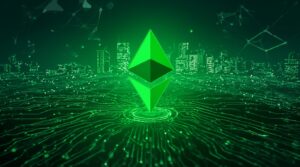DeFi Development Corporation (formerly Janover) is adopting a strategy that closely mirrors MicroStrategy’s well-known Bitcoin accumulation approach, but with a focus on Solana (SOL) instead of Bitcoin. This move positions DeFi Development as a major corporate holder and supporter of Solana, much like MicroStrategy’s pioneering role for Bitcoin
DeFi Development’s Solana Strategy
- Massive SOL Accumulation
The company has purchased over 317,000 SOL, now valued at around $48.2 million. Recent acquisitions include an $11.5 million buy and a $9.9 million buy, both adding to their growing SOL treasury. - Immediate Staking
All newly acquired SOL is staked right away. This generates passive income through staking rewards and helps secure the Solana network. - Validator Operations
DeFi Development plans to run Solana validators. This means they’ll play an active role in the network’s governance and security, while maximizing staking returns. - Reinvestment of Rewards
Staking rewards aren’t just cashed out-they’re reinvested back into the network, creating a feedback loop that grows both the company’s holdings and supports Solana’s ecosystem. - Strong Financial Backing
The company recently completed a $42 million funding round and aims to raise up to $1 billion for further SOL acquisitions. This shows serious long-term commitment. - Clear Treasury Policy
Their board approved a policy focused on long-term digital asset accumulation, starting with Solana as the primary asset.
Why Solana?
- Speed and Scalability
Solana is known for fast transaction speeds and low fees, making it attractive for both users and institutional investors. - Growing Institutional Interest
More companies are looking at Solana as a core asset in their crypto strategies, not just as a speculative investment.
Comparison Table: DeFi Development vs. MicroStrategy
| Aspect | MicroStrategy (Bitcoin) | DeFi Development (Solana) |
| Main Asset | Bitcoin (BTC) | Solana (SOL) |
| Strategy | Large, direct purchases | Accumulation + staking |
| Network Participation | Passive holding | Runs validators, active role |
| Treasury Productivity | Hold for value | Earn & reinvest staking rewards |
| Funding | Debt, equity raises | $42M raised, $1B goal |
Key Takeaways
- DeFi Development is using a MicroStrategy-style model, but with Solana and an active role in the network.
- All SOL is staked, making the treasury productive and supporting Solana’s security.
- The company’s reinvestment of staking rewards aims to create a self-sustaining growth cycle.
- With strong financial backing, DeFi Development is positioning itself as a leading institutional player in the Solana ecosystem.
FAQs
Q: How much Solana does DeFi Development hold?
- A: Over 317,000 SOL, valued at about $48.2 million.
Q: Why stake SOL instead of just holding?
- A: Staking generates passive income and supports the network, making the treasury more productive.
Q: What’s the long-term goal?
- A: To accumulate SOL, run validators, reinvest rewards, and become a major force in the Solana ecosystem.
Q: How is this different from MicroStrategy’s Bitcoin approach?
- A: DeFi Development is not just holding SOL-they’re staking, running validators, and reinvesting, taking a more active role.
Q: Could this impact Solana’s price?
- A: Large, public accumulation and staking can boost confidence and demand for SOL, potentially affecting its price.
DeFi Development Corporation’s strategy is clear: build a massive, productive SOL treasury, support the network, and set a new standard for corporate crypto involvement. This approach could inspire other public companies to take a more active role in blockchain ecosystem.










